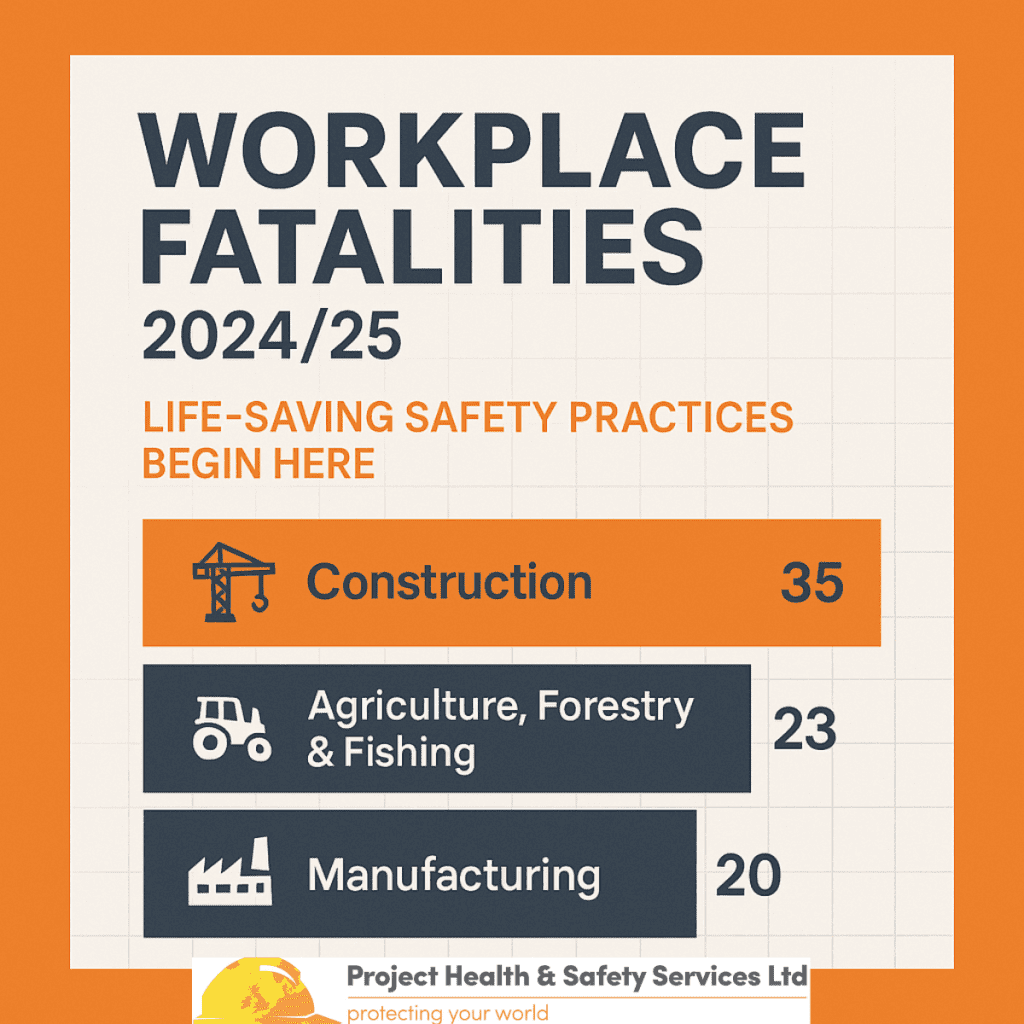2024/25 Workplace Fatalities: What the Latest HSE Data Tells Us. and How Businesses Must Respond
Published 14 July 2025
Every year, the HSE’s workplace fatality statistics provide more than just numbers, they offer a reality check on how well UK workplaces are managing risk. The newly released 2024/25 figures show a slight decline in fatal incidents, but the picture remains deeply concerning.
As a health and safety consultancy committed to helping businesses prevent these outcomes, we’ve analysed the key findings, and more importantly, what they mean for organisations in practical terms.
124 Work-Related Deaths — Still 124 Too Many
The HSE reports 124 workers were killed in work-related incidents in 2024/25 — down from 138 the year before. While any reduction is welcome, complacency would be a mistake. Each of these deaths represents not just a failure in process or equipment, but a profound human loss.
A further 92 fatalities involved members of the public — people not employed by the business, but fatally affected by workplace activity. This highlights that workplace safety extends well beyond the immediate workforce.
Where Are Fatalities Happening?
Certain sectors consistently bear the highest risk:
- Construction – 35 deaths
Falls from height continue to dominate here, but moving vehicles and falling objects also play a role. - Agriculture, Forestry & Fishing – 23 deaths
A combination of machinery, livestock, and hazardous terrain keeps this sector among the most dangerous. - Waste, Manufacturing, Transport –
These sectors also reported significant numbers, reflecting the ongoing need for tighter control over moving equipment and process safety.

What’s Killing Workers?
The leading causes of fatal injuries haven’t changed, and that’s part of the problem. These are well-known, preventable hazards:
- Falls from Height – 35 deaths
- Struck by a Moving Vehicle – 25 deaths
- Struck by a Moving Object – 20 deaths
- Trapped by Collapse/Overturning
- Contact with Machinery – 8 deaths
Each one of these risks can be tackled with proper systems, training, supervision, and culture, yet they remain stubbornly present year after year.

Asbestos Still Claiming Lives
Long-term exposure risks also continue to make their mark. 2,218 people died of mesothelioma in 2023 due to historic asbestos exposure. While the use of asbestos has been banned for decades, its legacy remains, especially in older buildings.
What Businesses Should Do Now
These statistics should prompt more than a glance — they should drive action. Here’s what we recommend as a starting point:
Refresh your risk assessments – especially for falls, vehicles, and machinery
Train and retrain your team – high-risk activities demand constant reinforcement
Walk the floor – management visibility and real-world checks are powerful tools
Talk about safety culture – are your staff confident to stop work if it’s unsafe?
Our Take as a Safety Consultancy
At Project Health & Safety Services, we work with businesses every day that want to reduce risk but need help making it practical. Whether you’re reviewing safety protocols, investigating an incident, or looking to build a proactive culture, we can support you with hands-on expertise.
Workplace fatalities are preventable. The data shows us where to look, it’s up to all of us to act.













